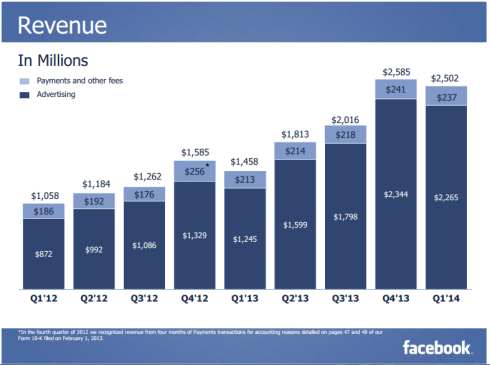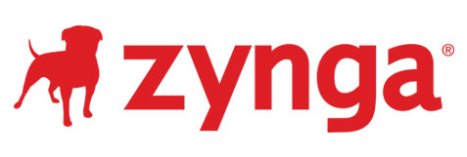This is the second post discussing the key trends surrounding social video. The first post is available here.
Content creators – YouTube celebrities & brands
- YouTube has a network of content creators embedded into the platform and is keeping them (at least for now) by sharing advertising revenue. Facebook has been wooing them with a pitch they’ll get discovered more easily and so increase their fan base and reach with its platform. Many are interested as they are aggrieved Google takes a 45% cut of the ad revenue. Facebook could change this situation by offering a slice of advertising revenue with its soon-to-be expanded video advertising offering.
- Social influencers are rather useful for brands and many have worked smartly with, paid and given perks to promote them – Boohoo’s partnership with Zoella to promote its range is but one example (YouTube video, website landing page). They enable brands to reach into a community and latch onto the influence and affinity of the influencer.
- But of course these social stars aren’t just on YouTube or a single social platform. The savvy ones have developed their communities across a range of platforms and so they are social media celebrities, and arguably full-blown celebrities, in their own right. So for brands the shift where social influencers release their content may not change the dynamic of who they partner with. But instead the channels in which the partnership is communicated and the type of content they create/co-create.
- Partnering with a social celebrity could be a key way marketers impact the Facebook News Feed. Brand page organic reach has plummeted and it takes truly special content to create wide break-through without paying for it. But pages of public figures still generate strong organic cut-through, so sponsoring or co-creating with a social celebrity could be a more cost effective way to reach audiences than Facebook advertising. There’s also the additional benefits of association among the social star’s community.
Social video advertising
- Video advertising on social is an burgeoning space and one currently dominated by Google. YouTube has fared so well as it appeals to the heavy-spending brand advertisers (in part due to its similarity with TV advertising), it’s on the whole native to the YouTube experience, there’s the ability to skip adverts (so users aren’t forced to watch content they don’t want to and brands only pay for engaged viewers), there’s targeting and there’s complementary direct response advertising.
- YouTube currently dominates with about 20% of the overall online video ad market (and therefore a higher percentage of social video advertising) and will bring in $1.13 billion in 2014 video ad revenue, according to eMarketer estimates.
- But Facebook is building on its existing offerings and will undertake a huge push in 2015. Facebook already has video ads but their introduction has been slow. It launched a premium video ad product which starts at $1 million for a 24-hour campaign. The big change will be more auto-play video ads through 2015 and the ability to buy video advertising on a small-scale.
- Facebook with auto-play video ads does risk cluttering the experience, especially on mobile, and negatively impacting the user experience. It’ll need to tread a fine line between creating social advertising vs. just becoming an environment for display advertising masquerading as a social platform.
The other major players in video
Multimedia on Twitter is growing but there’s limited availability of native video so, in the very short term, will likely remain a way to extend the reach of videos on other channels: YouTube and Vine. But big changes are underway and in 2015 we’re likely to see:
- The wider release of a native video player this should spur more video content in the Twitter timeline.
- The likely adoption of video auto-play (Vines already auto-play on desktop) which should (as it’s done on Facebook) sky-rocket views.
- The further courting of professional content creators and social stars. Native video is currently available to certain brands and verified accounts. But with the release of a native player Twitter is likely to adopt a similar approach that it’s done with its Amplify offering. This currently links TV events to Twitter’s social second screen. Sports and media brands have capitalized on this to inject near-real-time video (think instant replays and highlights), therefore extremely relevant content, into social conversations and earn revenue through Twitter-initiated brand sponsorships. If they roll this out more broadly and offer a better advertising revenue split than YouTube’s 55% they are likely to get more content producers onto the platform.
https://twitter.com/TwitterAmplify/status/516981620448845825
2014 was a big year for micro-video with a sharp rise in social stars and brands using Vine, Instagram, Snapchat and Tumblr to disseminate content and build followings. Marketers have also been using these platforms in an increasingly sophisticated way to create content and co-create with their communities. 2014 was the year of experimentation and 2015 will see these platforms form a key pillar of a social content and community strategy.
- Vine’s (Twitter’s six-second social network popular among teenagers) biggest change in 2014 was the ability to upload videos from the phone (pre-produced therefore more professional videos can be made by brands), the ability to send messages and notifications of new Vines from accounts people have favorited. Expect in 2015: better analytics (Vine recently introduced ‘Loop Counts’ to show views) and the slow introduction of native advertising. Brands, without an advertising option, have so far been limited to paying social influencers to advertise their products on Vine via product placement (ala Coca-Cola’s #ShareACoke campaign below). With Twitter’s re-focus on native video there is the possibility Vine may get sidelined in 2015, especially as decent brand Vine content is tricky and resource intensive to create.
- Instagram represents the visual social web, brands are present and developing mature communities. 25 percent of Fortune 500 companies now have Instagram profiles, 40 percent of the top 1000 “liked” Instagram videos are posted by brands, and branded Instagram content has gained 416 percent over the last two years (Millward Brown). The platform hit 300 million monthly users this year, it continued to roll-out incremental updates to improve image taking and the sharing experience, such as the ability to embed content on the web. Marketers should expect in 2015: improved imaging features, better analytics, more advertising options and features which mirror Snapchat’s product updates so Facebook can counter its growing impact (read more on Snapchat’s threat to Facebook).
- The past year has seen brands developing Snapchat presences with a raft of quirky, transpiring content. Snapchat is an outlier compared to other social media networks as it’s building a curated social experience more akin to a media platform and it isn’t scraping user data to target advertising. 2015 will see Snapchat continue to build itself out as a service platform within a platform (similar to WeChat and Line, an early example of this is Snapcash) and media platform, evolving beyond its core original use case of sending vanishing visual messages. The key trends to look out for:
- Wider roll-out of brand advertising in the Our Story feature – where Snapchatters send pictures and videos to create social coverage of events. This will be useful for marketers to introduce brand advertising to people during relevant events.
- The launch of ‘Snapchat Discover’ whereby content (articles, videos, music, images) from professional producers will be available within Snapchat. There’s likely to be an ad revenue split to attract the producers.
- The continued rise of Snapchat celebrities who are willing to partner with brands to co-create branded content. Disney and Grubhub and just two brands who have worked with them in 2014.
- Tumblr has had a topsy-turvy year. Figures points to flat and falling traffic since the Yahoo buy-out while a recent GWI study noted Tumblr’s user base in the last six months grew 120% to a total of 428 million users, of which 200 million are active monthly. Key in 2014 was Tumblr revamping its platform to make it more visual and specifically video-centric. In fact, video posts are now growing twice as fast as photo posts on Tumblr. This may negatively impact the platform as Tumblr has generated the most love / engagement from its community around gifs, graphics and photos. But Yahoo is making a big video play so expect Tumblr attempt to become a competitor to YouTube in 2015. A key part of this is the recently rolled-out improved native video player to encourage direct video uploads instead of embeds from YouTube and Vimeo and Yahoo’s maneuvering to attract social stars onto Tumblr. A key advantage of Tumblr for brands is that content / videos have longevity – nearly a third of engagement comes 30 days after its first posted.

















